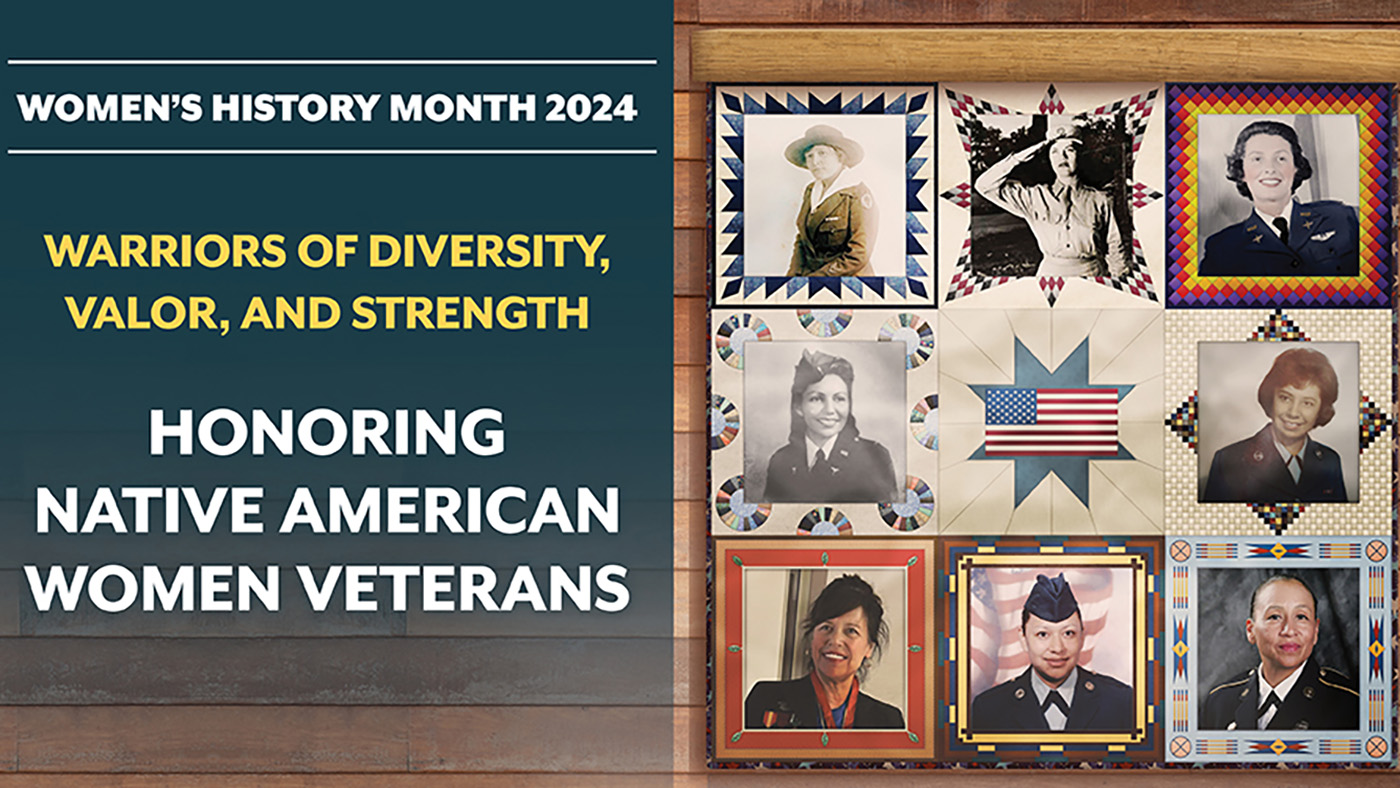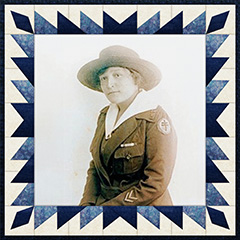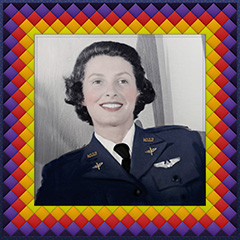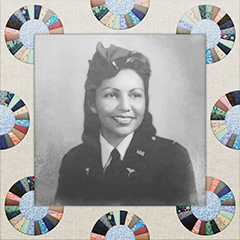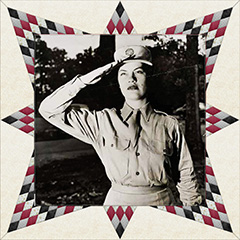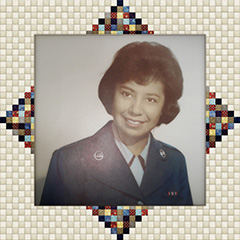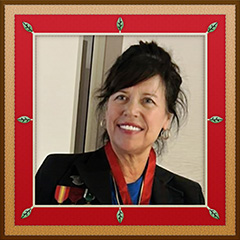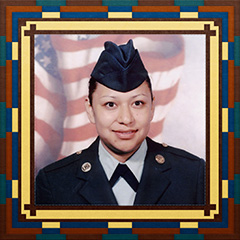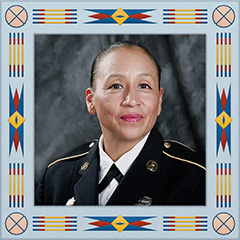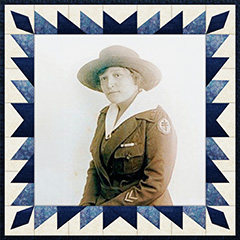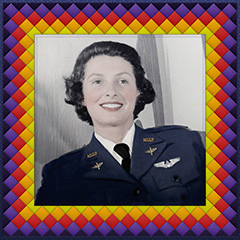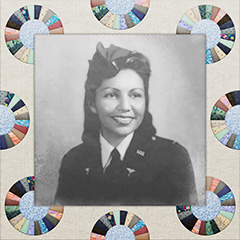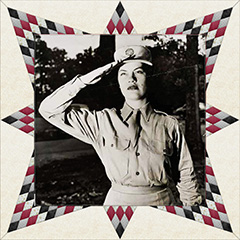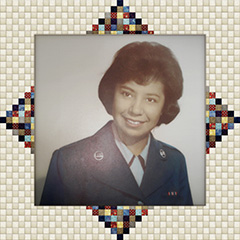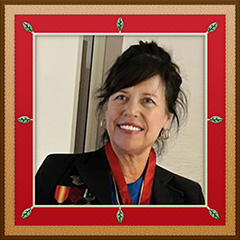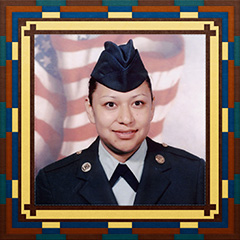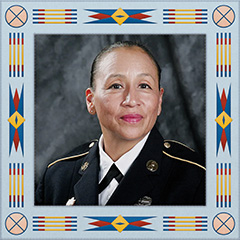During Women’s History Month 2024, VA Office of Women’s Health is honoring Native American women Veterans. VA recognizes the impact your advocacy, contributions and sacrifices have made on our military history. Native American women Veterans have had an exemplary tradition of military service for over 200 years, overcoming adversity and serving at a higher rate compared to any other demographic, demonstrating dedication to our country and everlasting commitment to service. Today, women make up 11.3% of the Native American Veteran population (about 20,000), which is a higher percentage than women in all other demographics.
Native American Women in the Military
During World War I, several Native American women volunteered to join the Army Nurse Corps, before they were even considered American citizens. During World War II, Native American women volunteers grew to about 800, joining various women’s branches of the military, including Women’s Army Auxiliary Corps (WAAC, Women’s Reserve or Women Accepted for Volunteer Emergency Service (WAVES), Women Marines, Coast Guard Women’s Reserve, and Women’s Airforce Service Pilots (WASP). Native American women continued to serve throughout our history, during the Korean War, Vietnam War era, Persian Gulf War and in the Post-9/11 era conflicts, and in several notable roles, from nurses to pilots and more. Native American women now serve in all branches of the Armed Forces.
Honoring Native American Women Veterans
Here are short bios for a few notable Native American women Veterans:
Charlotte Edith Monture, from the Iroquois of Mohawk Nation, was the first Indigenous woman to become a registered nurse in Canada and the first Indigenous woman from Canada to serve in the U.S. military. Monture broke barriers for Indigenous women in the armed forces. She was later elected honorary president of the Ohsweken Red Cross and continued to work as a nurse until her retirement.
Ola Rexroat, from the Oglala-Lakota Nation, was the only Native American woman to serve in the Women Airforce Service Pilots (WASPs) during WWII. She flew AT-6 and PT-19 planes and towed targets for aerial gunners. In 1944, she joined the U.S. Air Force, where she spent most of her career as an air traffic controller. She was inducted into the South Dakota Aviation Hall of Fame in 2007. In 2009, she and her fellow WASPs were awarded a Congressional Gold Medal.
Marcella Lebeau, from the Sioux Tribe in South Dakota, served as an Army nurse during World War II and treated the first battle casualties from the beaches of Normandy. For her work during the battles in Northern Europe, Ardennes and Rhineland, she received three service stars. She is also the only Native American woman to receive France’s highest civilian honor for her service as an Army nurse during World War II.
Grace Francis Thorpe, from Potawatomi, Kickapoo, and Menominee heritage, and a direct descendent of Sac and Fox Chief Black Hawk, enlisted in the Women’s Army Auxiliary Corps in 1943, where she was elevated to corporal and served as a recruiter before being sent overseas and being awarded the Bronze Star. Upon returning to the U.S., she became more involved in Native American activism and served for the National Congress of American Indians. In 1971, she co-founded the National Indian Women’s Action Corps to further empower and strengthen Indigenous family units and Native women.
Linda Woods, an Alaska Native of Ottawa and Chippewa descent, served in the Air Force between 1962 and 1966 and was stationed at Barksdale Air Force Base, California, as a switchboard operator. She partnered with the Inter-Tribal Council of Michigan for 20 years to promote Native American culture. She is the first female Veteran to create and carry the esteemed “Eagle Staff” symbol of Native American culture.
Dianna Good Sky, from the Bois Forte Band of Chippewa, joined the U.S. Navy in 1980, working in antisubmarine warfare. She was the first Native American woman to become a Chief Petty Officer, and the only woman to reach this rank in her tribe. As chief, she led training for 600 personnel and was the first to develop training systems for the Atlantic Fleet Integrated Submarine Surveillance System. She was honored with the first-ever combined Native American and traditional Naval ceremony in 1995, and since her retirement, has continued to spearhead Native American advocacy.
Lori Ann Piestewa, of the Hopi Tribe from the Navajo Nation, served in the post-9/11 era with the Army’s 507th Maintenance Company, a support unit that focused on maintenance and repair personnel. She became the first Native American soldier to die on foreign soil and the first woman to die in the Iraq War when she and others were taken prisoner. Since her death, Arizona renamed Squaw Peak, near Phoenix, as Piestewa Peak, and many other memorials have been established in her honor. After death, she was promoted to Specialist and received the Purple Heart and the Prisoner of War Medal.
Mitchelene BigMan, an Apsáalooke from the Montana Crow Reservation, served in the U.S. Army for 22 years. She deployed twice to Iraq and later served on the National Native American Veterans Memorial advisory committee. In 2010, she founded the Native American Women Warriors (NAWW), the first recognized all-Native American Women Color Guard and a resource/community for Native American women Veterans. She currently tours with NAWW, advocating for Native American women Veterans, and serves on the advisory committee for the Smithsonian National Native American Veterans Memorial.
You belong at VA
We understand that your health care is shaped by language, culture and other social factors. VA aims to provide culturally tailored health initiatives to improve your experience at VA and your health outcomes. From training our VA health care providers to consider your individual cultures, values and experiences to acknowledging your holistic beliefs in health and preferences for traditional healing methods, we provide you with the care you need.
Additionally, VA continues to extend telehealth services, increase our VA health care providers’ cultural awareness and expand information-sharing for Native American women Veteran’s health care coordination through:
- VA Office of Tribal Government Relations
- VA’s first Advisory Committee on Tribal and Indian Affairs
- VHA Office of Tribal Health
- VA Office of Rural Health, including Telemental Health Clinics for American Indian Veterans and Rural Native Veteran Health Care Navigator Program
VA also coordinates with Indian Health Service, Tribal Health Programs and Urban Indian Organizations (I-T-Us) to improve your health care and ensure VA-enrolled, eligible Native American women Veterans and their families receive reimbursement for care at I-T-U facilities. If you’re not currently enrolled in VA health care, we encourage you to give us a chance.
We’re proud to serve Native American women Veterans with health care you can trust and are continuously aiming to ensure culturally sensitive and respectful care is provided to you.
Topics in this story
Link Disclaimer
This page includes links to other websites outside our control and jurisdiction. VA is not responsible for the privacy practices or the content of non-VA Web sites. We encourage you to review the privacy policy or terms and conditions of those sites to fully understand what information is collected and how it is used.
More Stories
Study underscores important role COVID vaccination can have in protecting Veterans from infection and reducing long-term health consequences
Columbia VA’s robotic surgery teams completed their 800th robotic surgery and are on schedule to hit 1,000 by the end of the year.
In a decentralized clinical trial, Veterans can participate from their own homes or local VA instead of having to travel to a research site.

